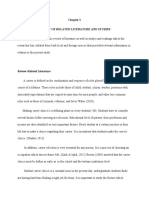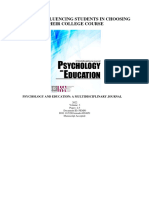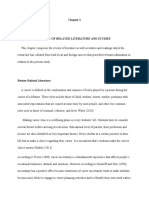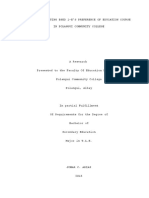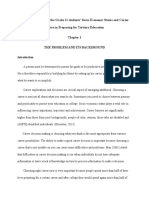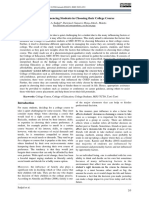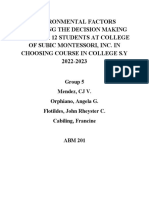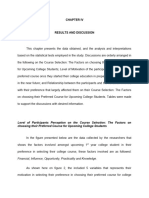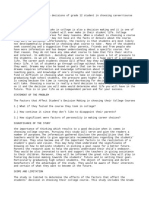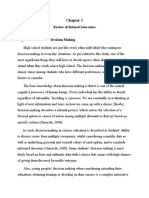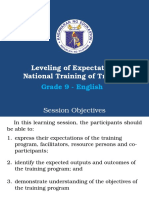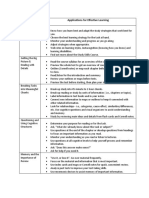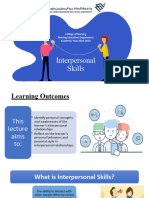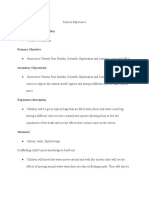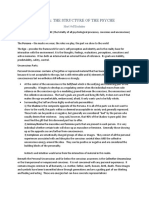0% found this document useful (0 votes)
5 views11 pagesChapter IV
Chapter IV presents the findings of a study on students' course preferences, highlighting demographic profiles, parental education, employment status, and family income. The analysis indicates that students are largely influenced by their self-concept rather than parental or peer input when choosing courses, with a significant number of respondents coming from families with low educational attainment and income. The chapter concludes with a proposed intervention plan aimed at guiding Grade 12 students in making informed decisions about their future career paths.
Uploaded by
melvin.lucmanCopyright
© © All Rights Reserved
We take content rights seriously. If you suspect this is your content, claim it here.
Available Formats
Download as DOCX, PDF, TXT or read online on Scribd
0% found this document useful (0 votes)
5 views11 pagesChapter IV
Chapter IV presents the findings of a study on students' course preferences, highlighting demographic profiles, parental education, employment status, and family income. The analysis indicates that students are largely influenced by their self-concept rather than parental or peer input when choosing courses, with a significant number of respondents coming from families with low educational attainment and income. The chapter concludes with a proposed intervention plan aimed at guiding Grade 12 students in making informed decisions about their future career paths.
Uploaded by
melvin.lucmanCopyright
© © All Rights Reserved
We take content rights seriously. If you suspect this is your content, claim it here.
Available Formats
Download as DOCX, PDF, TXT or read online on Scribd
/ 11


